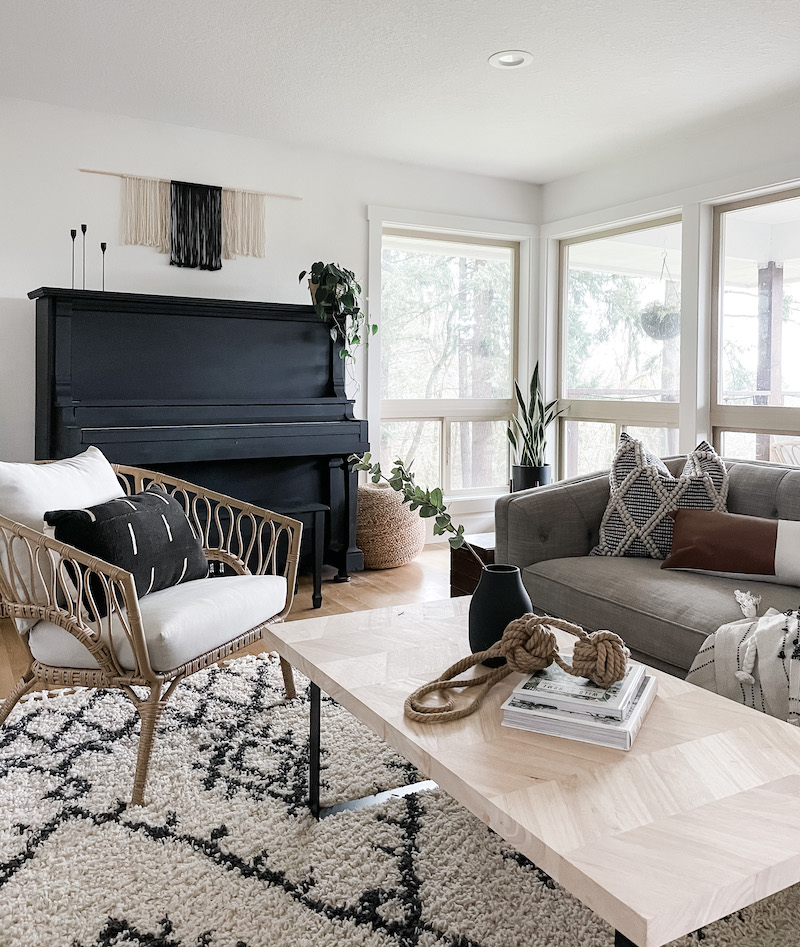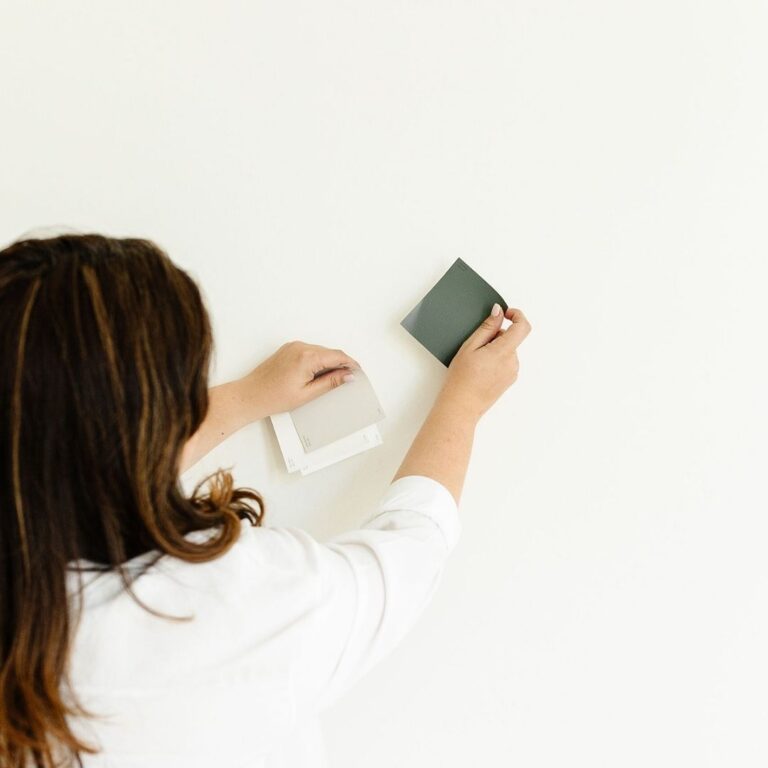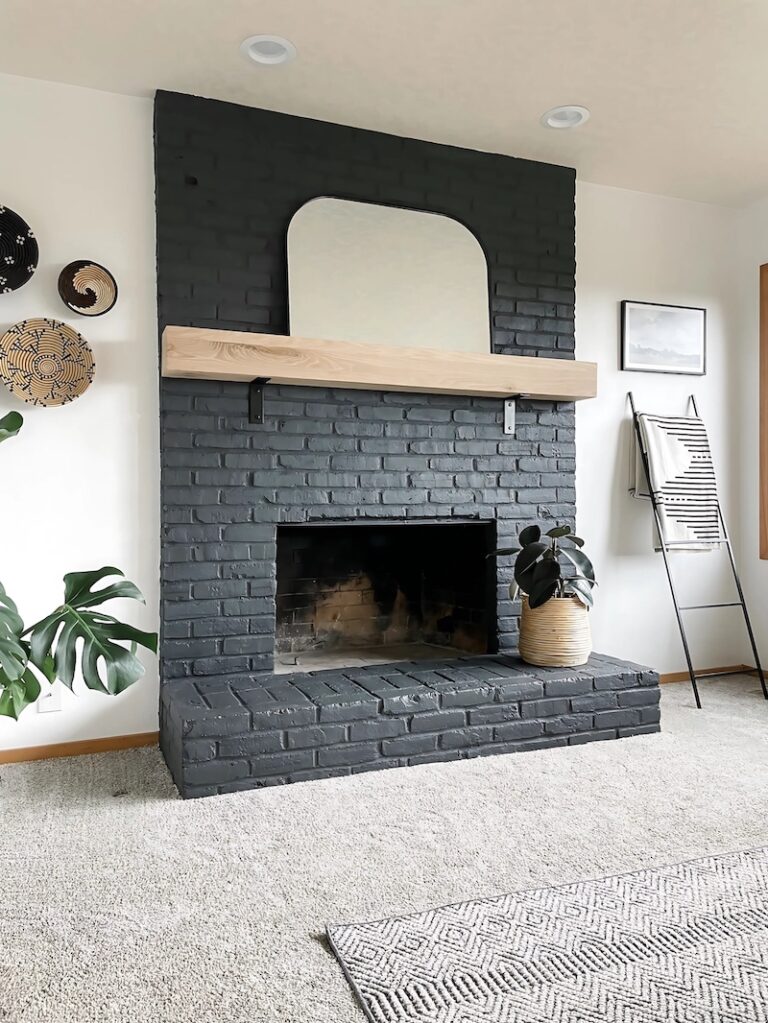Rustoleum Milk Paint vs Chalk Paint
I have a bit of a love/hate thing going on with paint. It can be time-consuming, messy, and sometimes unpredictable—but it’s also totally magical. I mean, nothing really transforms a space or furniture quite like paint. Over the years, I’ve tried all sorts of paints for furniture makeovers and usually opt for flat finishes. After a long run with chalk paint, I was ready to try something new – enter Rustoleum Milk Paint in Eclipse. I’ve now used it on three different projects, and today I’m sharing my honest review of milk paint vs chalk paint to help you decide what’s right for your next project.

Matte Furniture Paint
Chalk paint and milk paint both create a flat, matte finish. They’re great for giving old furniture new life without the hassle of sanding, stripping, or priming. I used chalk paint for years and still think it’s a solid option for a matte finish, but I was curious to try milk paint—and it didn’t disappoint. Keep reading for the pros & cons!
What Is Milk Paint?
You might be wondering, what exactly is milk paint? I was curious too! Milk paint is a non-toxic, water-based paint made with natural ingredients like milk protein (casein), lime, and pigments. It’s been used for centuries—especially in French furniture design—and creates a soft, flat, matte finish.
Today, you can still find milk paint in powdered form (you mix it with water yourself), but I opted for the pre-mixed version by Rustoleum, which is easier to use and available at places like Amazon or local hardware stores. The color Eclipse is a deep black with a velvety finish that transformed that piano and made it a true showstopper in my space.
What is milk paint used for?
Because it doesn’t require heavy sanding and covers blemishes well, milk paint is often used for furniture makeovers. It’s also readily available in small amounts, perfect for a DIY furniture project.
- An IKEA dresser
- A small cabinet
- And my favorite DIY to date: my painted black piano

Milk Paint vs Chalk Paint
Ok, so let’s get into it! There are a lot of similarities between milk paint and chalk paint. They both are fantastic options for furniture projects because they require little prep work and offer a nice matte finish. They are also easy to use paints making them a good option for DIY furniture makeovers.
There are some differences too, and for me, this is what really sets something like Rust Oleum Milk Paint apart. Here’s a side by side comparison of milk paint and chalk paint:

Chalk and Milk Paint Similarities:
- No sanding needed Just like chalk paint, sanding is not required for using milk paint on furniture. It magically adheres to surfaces and covers blemishes well. For shinier surfaces, like my piano, I still gave it a brief sanding.
- Easy to apply – The thickness of rustoleum milk paint makes it easy to apply as it glides on smoothly. Similar to chalk paint, it’s really easy to use which makes a good option for a DIY furniture update.
- Some areas can be uneven – Both options can go on a little inconsistently. For reasons I’ve yet to figure out, milk paint seems to be more uneven with some areas darker than others.

Chalk and Milk Paint Differences:
- Needs protective finish – Although the label suggests that a protective coating is not required, I found that milk paint scratches easily without it. Chalk paint also benefits from a wax coat but seems to wear more naturally. My unprotected milk paint projects scratch easily and quickly, but not in a distressed way, more of an “oops, this is damaged kind of look.“
- Color Richness – Milk paint provides a really rich, deep, almost velvety finish. In this way, I really prefer it to chalk paint which can lack depth and can seem dull even for flat finishes.
- Number of coats – I find that some of my Rustoleum milk paint projects required several coats for that richer look (2-3 maybe 4 in some spots). This can be a benefit if you’re looking to control the intensity. But if you’re hoping for a quick paint project, it may take a bit longer than anticipated. Chalk paint often only needs one coat.
Is Milk Paint Better than Chalk Paint?
In my opinion? Yes—at least for the look I’m going for. I love the rich color and velvety finish of milk paint, and it feels more timeless and modern to me. If your style leans minimal, organic modern, or even vintage with a clean twist, milk paint is a great choice.
That said, chalk paint still has its place—especially if you love farmhouse, shabby chic, or are doing a quick one-coat refresh. It’s still easy to use and great for beginners. If you’re curious to know more, this chalk paint guide from Real Simple covers all the details.
Final Thoughts
Rustoleum Milk Paint has been a game-changer for my DIY projects, offering an easy way to achieve a beautiful matte, vintage look on furniture. Whether you’re reviving an old piece or adding charm to something new, this paint delivers great results with minimal effort.
I hope this review gave you all the details you need to decide if it’s the right fit for your next project. If you’ve tried it or have any questions, let me know—I’d love to hear how your projects turn out!



